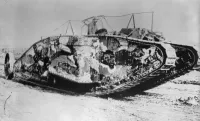Niagara Falls comprises three waterfalls at the southern end of Niagara Gorge, located on the border between Ontario, Canada, and New York, USA. Horseshoe Falls (Canadian Falls) is the largest and straddles the international border. American Falls and Bridal Veil Falls are smaller and located within the United States. Goat Island separates Bridal Veil Falls from Horseshoe Falls, while Luna Island separates Bridal Veil Falls from American Falls. These falls are a major tourist attraction, celebrated for their beauty and power.
October 24, 1901: Annie Edson Taylor goes over the falls in a barrel
On October 24, 1901, Annie Edson Taylor, a 63-year-old school teacher, became the first person to go over Niagara Falls in a barrel as a publicity stunt. She survived, though bleeding and shaken, and advised against repeating the act.
1902: Partial freezing of the falls
The year 1902 is noted for partial freezing of the falls.
1906: Ontario brings power transmission under public control
In 1906, The Government of Ontario eventually brought power transmission operations under public control, distributing Niagara's energy to various parts of the Canadian province.
1906: Legislation to preserve the falls enacted
In 1906, the United States Congress enacted legislation to preserve Niagara Falls by regulating the waters of the Niagara River.
1906: Partial freezing of the falls
The year 1906 is noted for partial freezing of the falls.
1909: Treaty limits water diversion
In 1909, a treaty was established that limited the total amount of water diverted from Niagara Falls by both the United States and Canada to approximately 1,600 cubic meters per second.
1911: Bobby Leach goes over Horseshoe Falls in a barrel
In 1911, Bobby Leach went over Horseshoe Falls in a crude steel barrel and was rescued by William "Red" Hill Sr.
1911: Partial freezing of the falls
The year 1911 is noted for partial freezing of the falls.
February 4, 1912: Ice Bridge Tragedy
On February 4, 1912, the ice bridge which had formed on January 15 began breaking up while people were still on it, resulting in the Ice Bridge Tragedy.
August 6, 1918: Iron scow stuck on the rocks above the falls
On August 6, 1918, an iron scow became stuck on the rocks above Niagara Falls, and the two men on board were rescued.
July 1920: Charles Stephens dies going over falls
In July 1920, Charles Stephens, a 58-year-old barber from Bristol, England, died attempting to go over Niagara Falls in a wooden barrel. He was the first person to die in this type of endeavor.
1923: Michigan Central Railroad company decides to build a new bridge
In 1923, the Michigan Central Railroad company decided to build a new bridge, to be located between the Lower Steel Arch Bridge and the Cantilever Bridge.
February 1925: Michigan Central Railway Bridge opens
In February 1925, the Michigan Central Railway Bridge opened and remained in use until the early 21st century.
1925: Niagara means thundering water
In 1925, The New York Times used the Native American word Ongiara to mean thundering water in reference to Niagara.
1928: "Smiling Jean" Lussier goes over the falls in a rubber ball
In 1928, "Smiling Jean" Lussier successfully went over Niagara Falls in a large rubber ball.
1932: Partial freezing of the falls
The year 1932 is noted for partial freezing of the falls.
1936: Partial freezing of the falls
The year 1936 is noted for partial freezing of the falls.
1937: Bridge renamed Whirlpool Rapids Bridge
In 1937, the Niagara Railway Arch, or Lower Steel Arch Bridge was renamed the Whirlpool Rapids Bridge and remains in use today.
January 1938: Ice jam twists frame of Honeymoon Bridge
In January 1938, an ice jam twisted the steel frame of the Upper Steel Arch Bridge.
January 27, 1938: Honeymoon Bridge collapses
On January 27, 1938, the Upper Steel Arch Bridge, also known as the Honeymoon Bridge, collapsed after an ice jam twisted its steel frame earlier in January 1938.
February 1940: Construction of Rainbow Bridge commences
In February 1940, construction of a steel bridge commenced.
November 1941: Rainbow Bridge opens
In November 1941, the Rainbow Bridge opened and remains in use today.
1950: Niagara Treaty regulates water diversion
In 1950, the Niagara Treaty regulated water diversion and is administered by the International Niagara Board of Control.
1950: Treaty signed to limit water usage
In 1950, the U.S. and Canada signed a treaty to limit water usage by power plants to preserve Niagara Falls' natural beauty. The treaty dictates minimum water flow over the falls, monitored by the International Niagara Board of Control, using a NOAA gauging station. The treaty allows higher summertime diversion at night when tourists are fewer and during the winter months when there are even fewer tourists.
1950: Limitation remains in effect until 1950
The limitation of water diversion remained in effect until 1950.
1953: Niagara movie release
In 1953, visits to Niagara Falls rose sharply after the release of "Niagara", a movie starring Marilyn Monroe and Joseph Cotten.
1954: Mound of talus deposited
In 1954, a huge mound of talus was deposited.
1954: Ice bridge thichkness has not occurred since 1954
The ice bridge thickness that was common in certain years at the base of the falls, has not occurred since 1954.
1955: Terrapin Point created
In 1955, the area between the Terrapin Rocks and Goat Island was filled in, creating Terrapin Point.
1956: Niagara Fools released
In 1956, the animated short "Niagara Fools" featured Woody Woodpecker attempting to go over the falls in a barrel.
1956: Hydropower station partially destroyed
In 1956, the region's largest hydropower station was partially destroyed in a landslide, drastically reducing power production.
1957: Niagara Redevelopment Act passed
In 1957, Congress passed the Niagara Redevelopment Act, granting the New York Power Authority the right to fully develop the United States' share of the Niagara River's hydroelectric potential.
1959: Glass and metal observation tower added
In 1959, a glass and metal observation tower was added to Niagara Falls, alongside commemorative statues, shops, and restaurants.
July 9, 1960: "Miracle at Niagara"
On July 9, 1960, during the "Miracle at Niagara", Roger Woodward, a seven-year-old boy, was swept over Horseshoe Falls after a boat accident. He survived after being rescued from the plunge pool. His sister was saved near the falls, but their uncle died.
1960: Niagara Falls Suite composed
In 1960, composer Ferde Grofé was commissioned to compose the "Niagara Falls Suite" in honor of the completion of the first stage of hydroelectric work at the falls.
1961: Niagara Falls hydroelectric project goes online
In 1961, the Niagara Falls hydroelectric project went online, becoming the largest hydropower facility in the Western world.
June 1969: American Falls diverted
In June 1969, a temporary rock and earth dam was constructed, completely diverting the Niagara River from American Falls for several months while the U.S. Army Corps of Engineers studied and strengthened the riverbed.
November 1969: Flow restored to American Falls
In November 1969, the temporary dam was dynamited, restoring flow to American Falls.
1980: Niagara Falls featured in Superman II
In 1980, Niagara Falls was a featured location in the major motion picture Superman II.
July 2, 1984: Karel Soucek plunges over Horseshoe Falls
On July 2, 1984, Karel Soucek from Hamilton, Ontario, went over Horseshoe Falls in a barrel and only sustained minor injuries. He was fined $500 for the stunt without a license.
August 1985: Steve Trotter goes over the falls in a barrel
In August 1985, Steve Trotter became the youngest person ever at 22 and the first American in 25 years to go over Niagara Falls in a barrel.
1985: Karel Soucek fatally injured in barrel stunt
In 1985, Karel Soucek was fatally injured while attempting to recreate the Niagara drop at the Houston Astrodome when his barrel hit the side of the water tank. He died the next day.
September 28, 1989: Peter DeBernardi and Jeffery James Petkovich go over the falls in a two-person barrel
On September 28, 1989, Peter DeBernardi and Jeffery James Petkovich became the first "team" to go over Niagara Falls in a two-person barrel. The stunt was intended to discourage youth from drug use. They emerged with minor injuries.
June 5, 1990: Jesse Sharp paddles over the falls in a canoe
On June 5, 1990, Jesse Sharp paddled over Niagara Falls in a closed deck canoe. He did not wear a helmet or life vest, and his body was never found.
1990: David Copperfield performs trick at Niagara Falls
In 1990, Illusionist David Copperfield performed a trick in which he appeared to travel over Horseshoe Falls.
1991: The Falls documentary film
In 1991, Kevin McMahon's documentary film "The Falls" explored the place of Niagara Falls in the world's collective imagination.
September 27, 1993: John "David" Munday completes his second journey over the falls
On September 27, 1993, John "David" Munday completed his second journey over Niagara Falls.
October 1, 1995: Robert Overacker dies going over the falls on a Jet Ski
On October 1, 1995, Robert Douglas "Firecracker" Overacker went over Niagara Falls on a Jet Ski to raise awareness for the homeless. His parachute failed to open, and he died.
1996: Native American groups threaten to boycott Maid of the Mist
In 1996, Native American groups threatened to boycott the Maid of the Mist boat companies if they would not stop playing what they said was a fake story on their boats. The Maid of the Mist dropped the audio.
1997: Niagara Falls piece composed
In 1997, composer Michael Daugherty composed "Niagara Falls", a piece for concert band inspired by the falls.
October 20, 2003: Kirk Jones survives plunge over Horseshoe Falls
On October 20, 2003, Kirk Jones became the first known person to survive a plunge over Horseshoe Falls without a flotation device. He survived with only battered ribs, scrapes, and bruises.
2004: Wonderfalls TV show setting
In early 2004, the falls, or more particularly, the tourist-supported complex near the falls, was the setting of the short-lived Canadian-shot U.S. television show Wonderfalls.
August 2005: Niagara Tunnel Project Started
In August 2005, Ontario Power Generation began the Niagara Tunnel Project to increase power production. This civil engineering project involved building a new 12.7-metre diameter, 10.2-kilometre-long water diversion tunnel.
October 2006: Niagara Falls used for Pirates of the Caribbean movie
In October 2006, location footage of Niagara Falls was shot to portray "World's End" in the movie "Pirates of the Caribbean: At World's End".
2006: Cantilever Bridge inducted into the North America Railway Hall of Fame
In 2006, after being removed and scrapped, the Cantilever Bridge was inducted into the North America Railway Hall of Fame.
2007: Niagara Falls visitor count
In 2007, the number of visitors to Niagara Falls was expected to total 20 million.
March 11, 2009: Man survives unprotected trip over Horseshoe Falls
On March 11, 2009, an unidentified man survived an unprotected trip over Horseshoe Falls, suffering from severe hypothermia and a head wound. Witnesses reported he intentionally entered the water.
2009: Niagara Falls visitor count
By 2009, the annual rate of tourists visiting Niagara Falls was expected to top 28 million.
May 21, 2012: Man survives unprotected trip over Horseshoe Falls
On May 21, 2012, an unidentified man became the fourth person to survive an unprotected trip over Horseshoe Falls, after "deliberately jumped" into the Niagara River.
June 15, 2012: Nik Wallenda walks across the falls area on a tightrope
On June 15, 2012, Nik Wallenda became the first person to walk across the Niagara Falls area in 116 years on a tightrope. His tightrope was 550 metres long, and he crossed near the brink of Horseshoe Falls.
March 2013: Niagara Tunnel Project placed into service
In March 2013, the Niagara Tunnel Project was officially placed into service, helping to increase the generating complex's nameplate capacity by 150 megawatts and providing new hydroelectricity for approximately 160,000 homes.
2013: Three Sisters Islands renovated
In 2013, New York State began an effort to renovate Three Sisters Islands, using funds from the re-licensing of the New York Power Authority hydroelectric plant.
2014: Hornblower Cruises replaces Maid of the Mist on Canadian side
In 2014, Hornblower Cruises replaced Maid of the Mist on the Canadian side of Niagara Falls.
2014: Partial freezing of the falls
The year 2014 is noted for partial freezing of the falls.
2015: Chasing Niagara film released
In 2015, the film "Chasing Niagara" documented professional kayaker Rafa Ortiz's preparation to paddle over the falls in a kayak.
2017: Kirk Jones dies attempting to go over the falls again
In 2017, Kirk Jones tried going over Niagara Falls again, this time using a large inflatable ball, but he died in the process.
2017: Partial freezing of the falls
The year 2017 is noted for partial freezing of the falls.
July 8, 2019: Man survives unprotected trip over Horseshoe Falls
On July 8, 2019, a man jumped into the Niagara River and went over Horseshoe Falls. He was found alive but injured sitting on the rocks at the water's edge.
October 31, 2019: Scow position shifted during storm
On October 31, 2019, the position of the iron scow, which had been stuck on the rocks since 1918, shifted by 50 meters during a storm.
2019: Partial freezing of the falls
The year 2019 is noted for partial freezing of the falls.
Mentioned in this timeline
The United States of America is a federal republic located...

Marilyn Monroe was an iconic American actress and model who...

A tank is an armored fighting vehicle designed for front-line...

A car also known as an automobile is a wheeled...
Canada is a North American country the second largest in...
Michigan is a peninsular state in the Great Lakes region...
Trending

1 month ago Harry Styles' Influence: Celebrity Boyfriend Phenomenon, Grammy Inspiration, and Album of the Year Debate.

6 months ago Margaret Cho Claims Ellen DeGeneres Mistreated Her for Years, Calling Her 'Mean'.
6 months ago Florian Wirtz Reportedly Transfers from Leverkusen to Liverpool for 140 Million Euros

7 months ago Declan Rice returns against Newcastle; Havertz nearing return from hamstring injury at Arsenal.

6 months ago Pulisic's Gold Cup Controversy: Donovan's Criticism and Pochettino's Stance on Game Selection

6 months ago Deontay Wilder returns to boxing against Tyrell Herndon, coached by Don House.
Popular

XXXTentacion born Jahseh Dwayne Ricardo Onfroy was a controversial yet...

Ben Shapiro is a prominent American conservative political commentator media...

Candace Owens is an American conservative political commentator and author...

Stranger Things created by the Duffer Brothers is a popular...
The Kennedy Center Honors are annual awards recognizing individuals and...

William Franklin Graham III commonly known as Franklin Graham is...